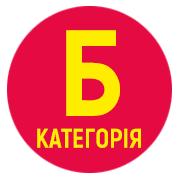INTERNATIONAL EXPERIENCE OF TRAINING SPECIALISTS FOR PHYSICAL CULTURE AND SPORTS FOR TEACHING IN SCHOOLS (ANALYSIS OF CURRICULUMS)
DOI:
https://doi.org/10.32782/olimpspu/2023.2.7Keywords:
Work programs, curricula, Scandinavian countries, physical culture and sportsAbstract
It has been established that among foreign researchers and practitioners in the field of physical culture and sports there are discussions and questions about what should be the legality, content and purpose of the subject of physical education. The relevance of research related to how teacher education works and familiarizing teachers with the concept of health and what efforts are being made to familiarize teachers with what is said about health in physical education curricula is determined. It has been analyzed and determined that the new Norwegian curriculum emphasizes a variety of movement activities, play and practice to a greater extent than before. The subject facilitates a wide selection of different motor actions. There is a subject shift towards a less sportsoriented subject, but the sports perspective is still protected by the fact that sports activities are included as part of the concept of motor activity. Experiences of nature and safe and sustainable transport are central to this subject. Teaching the subject "Sports and health" in Sweden is aimed at forming students’ versatile motor skills, interest in physical activity and recreation in nature. Through teaching, students should be given the opportunity to develop good lifestyle habits in order to be able to influence their health throughout their lives. LK20 indicates that it is the competence objectives that form the basis for assessment of subjects both during and at the end of training. This means that assessment should be based on how competence in physical education is described in the curriculum. During the evaluation, students and professionals of the specialty of physical culture and sports according to the curriculum (Lgr22) should use the assessment of student achievements by classes (criteria) from A (higher level) is when the student performs a motor activity that includes complex movements in different physical contexts, and adapts his movements well to the purpose of the activity to E (low level) the student performs motor activities that involve complex movements in different physical contexts and to some extent adapts his movements to the purpose of the activity. It has been confirmed that physical education and sports in the Scandinavian countries preserve traditional movement activity in society, but also stimulate experimentation and creative development in alternative forms of movement.
References
Antonovsky A. Health, Stress and Coping. San Francisco : JosseyBass, 1979. 225 р.
Mong, H. H. «I kroppsøving så tenker jeg nok mest på det fysiske» – En studie om kroppsøvingslæreres forståelse og undervisning om helse i faget. Journal for Research in Arts and Sports Education, 3(2). 2019. URL: https://doi.org/10.23865/jased.v3.1463.
Mong Hю H. Forskningsartikler: forskningsartikler: temanummer Norges idrettshøgskole, 2022. URL: https://doi.org/10.23865/jased.v3.1463.
Лук’янченко М.І. Здоров’я людини через призму моделі салютогенезу: теорія та практика. Педагогіка, психологія та медико-біологічні. 2010. С. 58–60.
Норвегія навчальний план. URL: https://www.udir.no/lk20/kro01-05?lang=nob.
Швеція навчальний план. URL: https://www.skolverket.se/undervisning/grundskolan/laroplan-och-kursplanerfor-grundskolan/laroplan-lgr22-for-grundskolan-samt-for-forskoleklassen-och-fritidshemmet?url=- 96270488%2Fcompulsorycw%2Fjsp%2Fsubject.htm%3FsubjectCode%3DGRGRIDR01%26tos%3Dgr&sv.url=12.5dfee44715d35a5cdfa219f.
Закон Норвегії про здоров’я. URL: https://www.regjeringen.no/no/tema/helse-og-omsorg/folkehelse/innsikt/folkehelsearbeid/id673728/.







